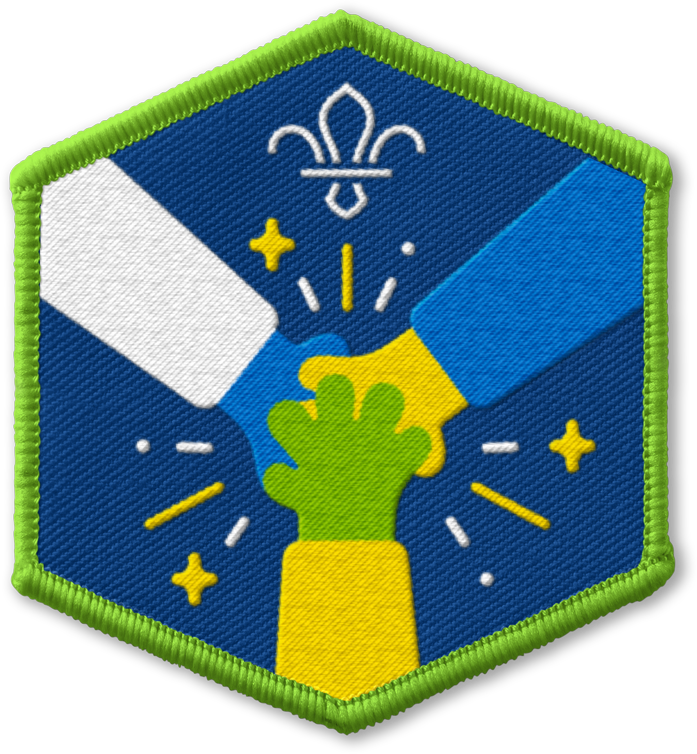
Egg-traordinary senses
You’ll need
- Tables
- Plastic eggs
- Items of put inside the eggs
- Bowls (optional)
- Paper and pen (one per person or team)
Before you begin
- Use the safety checklist to help you plan and risk assess your activity. Additional help to carry out your risk assessment, including examples can be found here. Don’t forget to make sure all young people and adults involved in the activity know how to take part safely.
- Make sure you’ll have enough adult helpers. You may need some parents and carers to help if you’re short on helpers
Setting up the activity
- Fill the eggs with your items. Make sure the eggs have a variety of different things in them. There’s a list of item suggestions at the bottom of this page. Make sure to check the dietary requirements and allergies for your group and change the recipe as needed.
- Place the eggs on different tables around the room. There needs to be lots of space between the eggs, so no one can overhear any discussions about what’s inside.
- Label each egg with a number or letter, so people can easily write down their answers.
Play the game
- Gather everyone in a circle.
- Explain to everyone that they’ll be playing a game where they need to use their senses to guess what household item is hidden in the eggs. They can’t open the eggs, but can only try to smell or hear what’s inside.
- Tell everyone when they need to go up to each egg, then shake it and smell it to see what’s inside.
- You can play individually or in teams. Each individual or team needs a piece of paper and pen to write down their answers.
- Send people or teams to their first egg.
- When everyone is ready, they can start figuring out what’s in the first egg. After they’ve decided, each person or team should write down the egg’s number or letter and what they think’s in the egg.
- After two minutes or so, tell everyone to move onto the next egg. People shouldn’t move on until told, so everyone has a chance to decide what’s in the egg without interruption or copying. Repeat this until everyone’s been to every egg.
- After all the eggs have been guessed, gather everyone together. Take each egg and open it, possibly over a bowl to reduce mess, and ask people to mark their scores.
- The person or team with the most points can then be declared the winner.
- Marble
- Grass
- Screws
- Ice – fill the egg with water, then freeze it!
- Orange segments
- Cheese and onion crisps
- Tomato ketchup
- Rice or pasta or lentils
- Baked beans
- Watch (with ticking clock noise)
- Coins, such as 1ps or 2ps or 5ps
- Whipped cream
- Hot chocolate
- Shampoo
- Toothpaste
- String
- Coffee
- Cinnamon
- A small toy
- Cheese
- Banana
- Cat or dog food
- Bell
Reflection
This activity gave everyone the opportunity to have fun while solving problems. You had to guess what was inside the eggs, how did you find this? Did some smell different, or could you hear it moving inside the egg? What was the hardest item to guess? What was the easiest?
Safety
All activities must be safely managed. You must complete a thorough risk assessment and take appropriate steps to reduce risk. Use the safety checklist to help you plan and risk assess your activity. Always get approval for the activity, and have suitable supervision and an InTouch process.
- Active games
The game area should be free of hazards. Explain the rules of the game clearly and have a clear way to communicate that the game must stop when needed. Take a look at our guidance on running active games safely.
- Food
Remember to check for allergies, eating problems, fasting or dietary requirements and adjust the recipe as needed. Make sure you’ve suitable areas for storing and preparing food and avoid cross contamination of different foods. Take a look at our guidance on food safety and hygiene.
- To make it harder, you could get people to use their Scout scarves/neckers as blindfolds.
- You could also hide the eggs around the room for people to find to add an extra element to the game.
If people may struggle to move or handle the eggs, people could also play in pairs or teams, so everyone’s supported in taking part. The teammate could help the person smell and hear what’s in the egg.
All Scout activities should be inclusive and accessible.
Consider asking the young people to bring in items to fill the eggs with.



